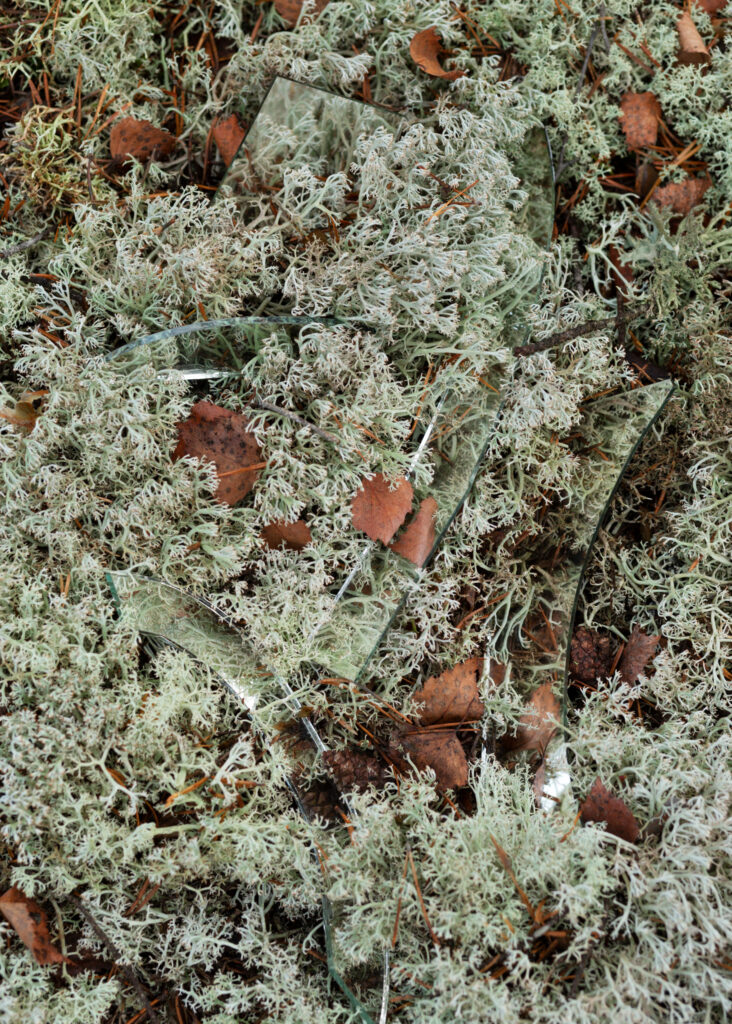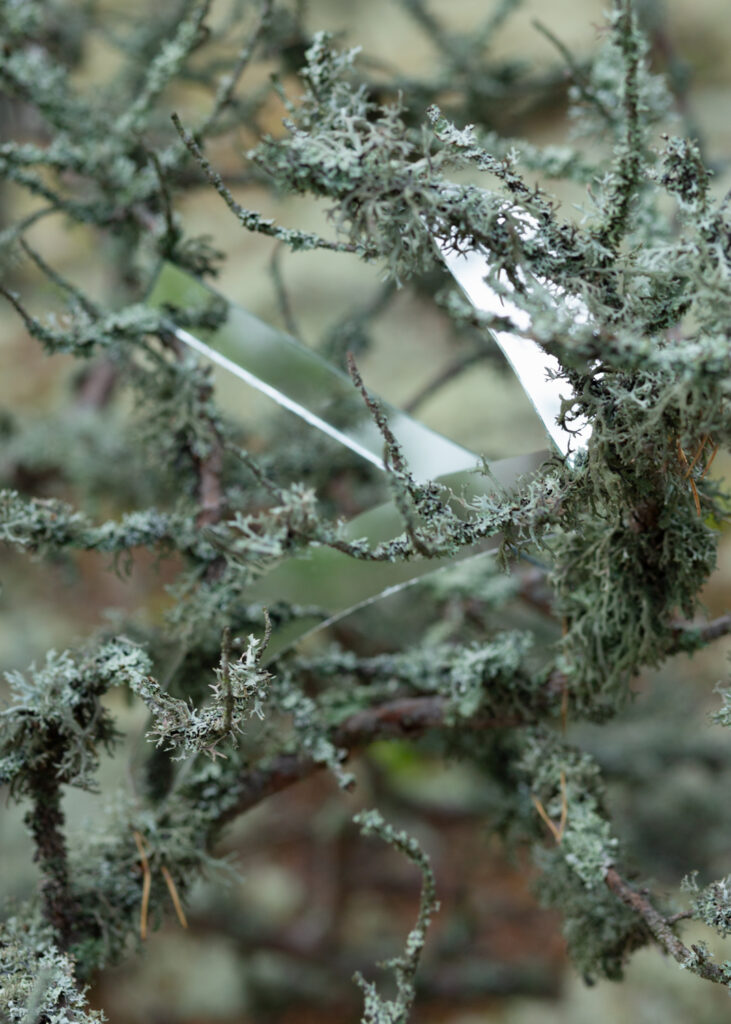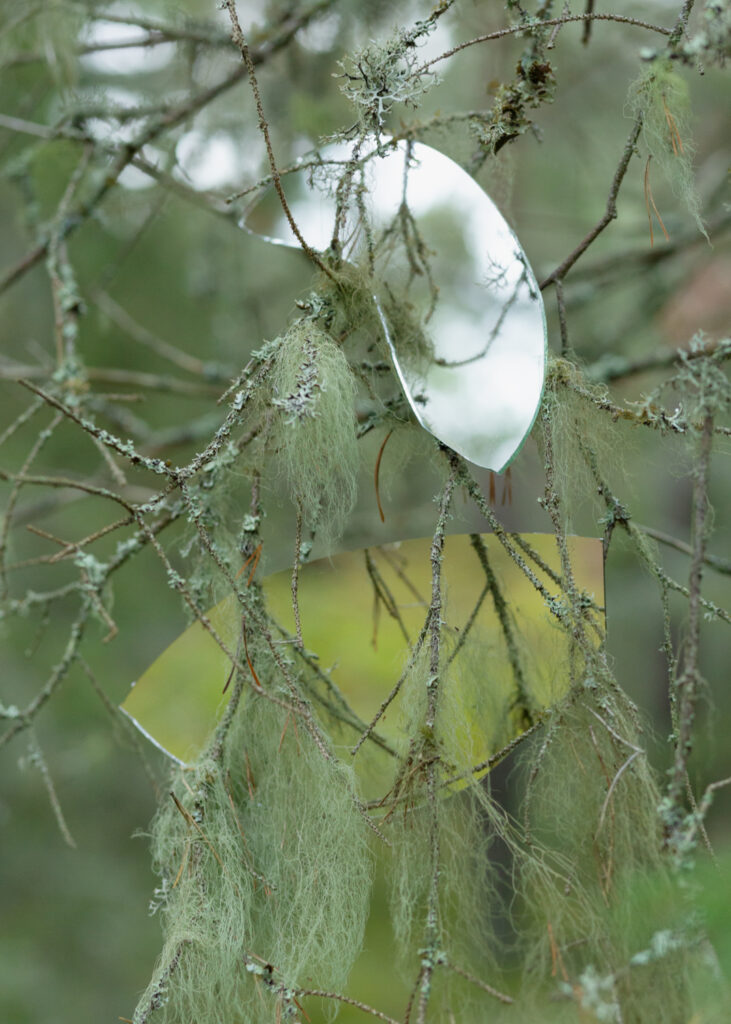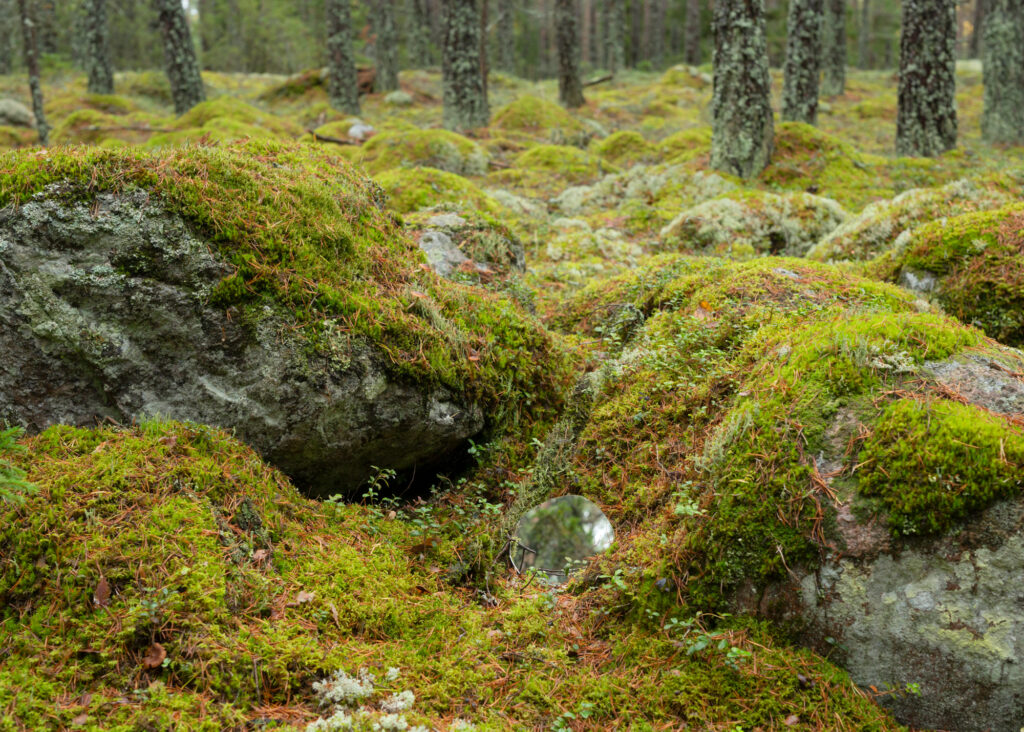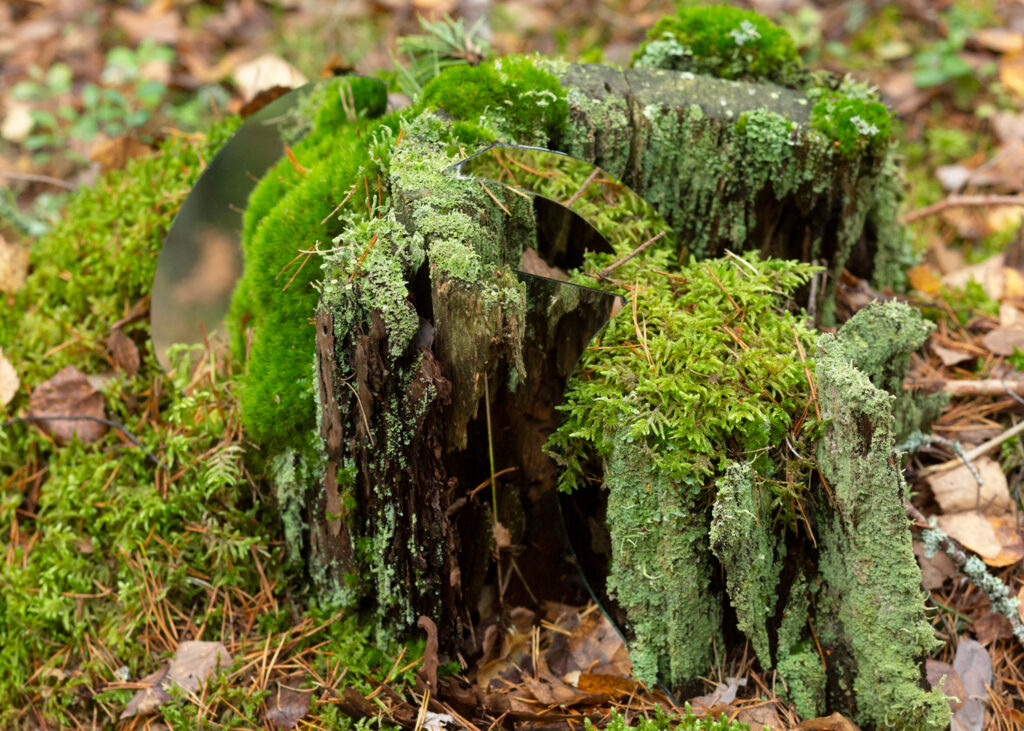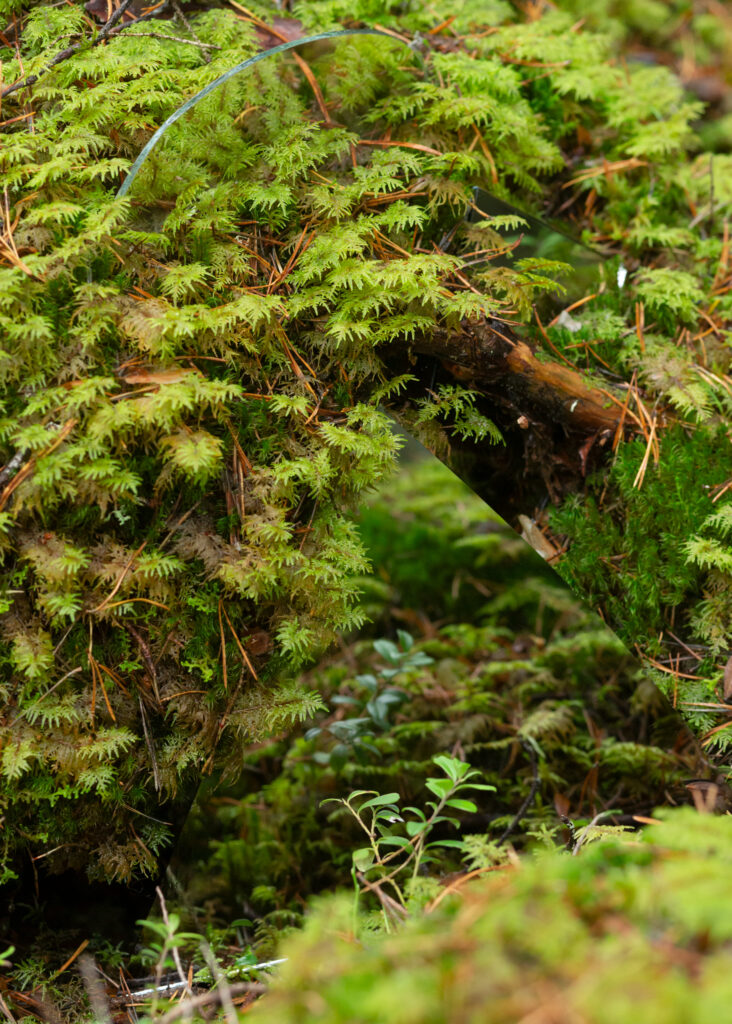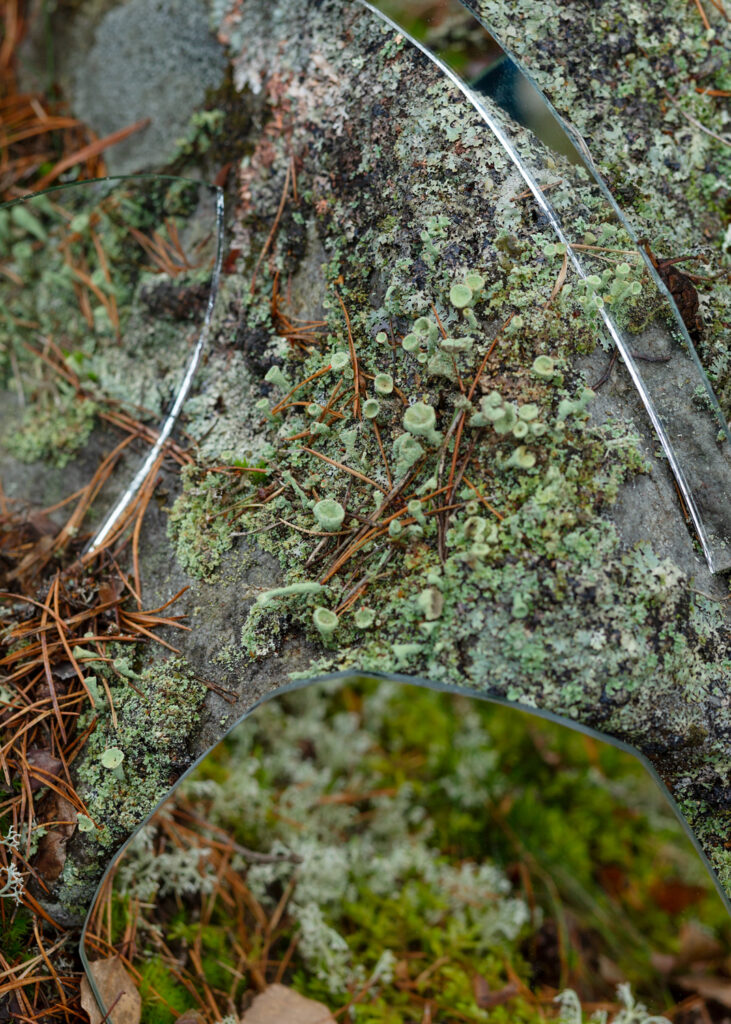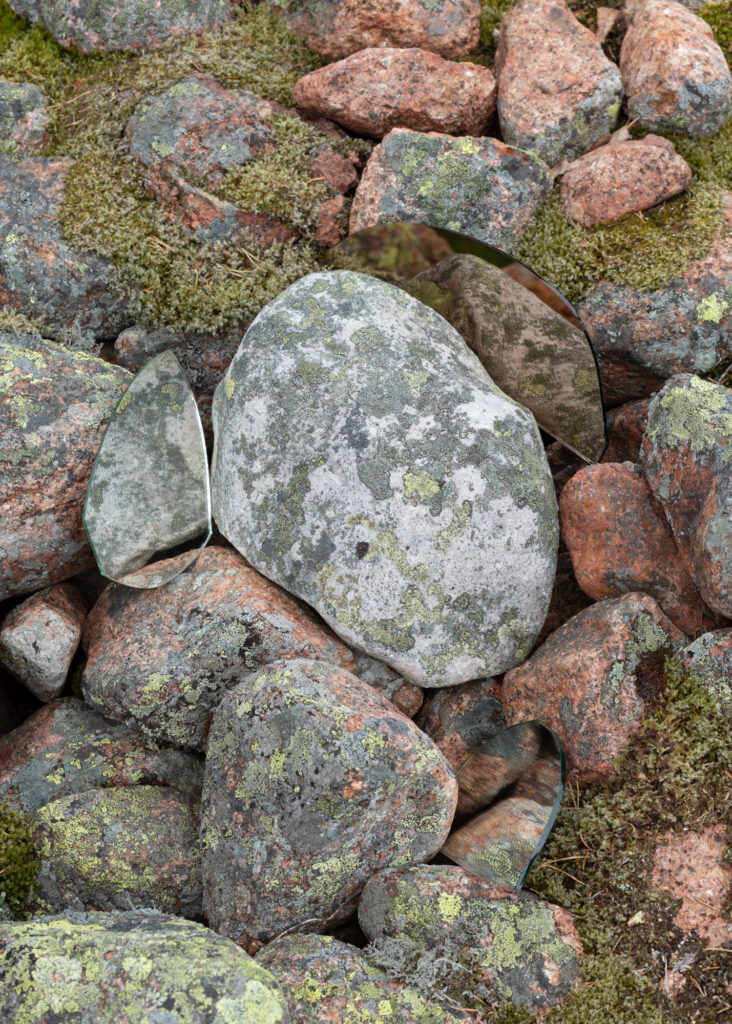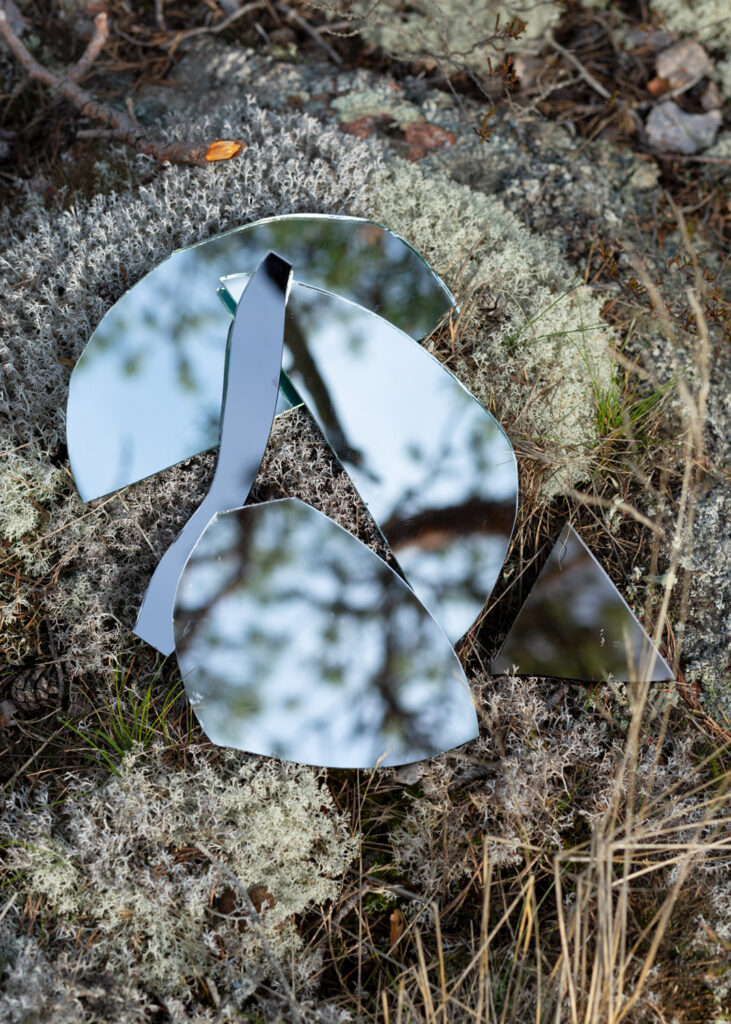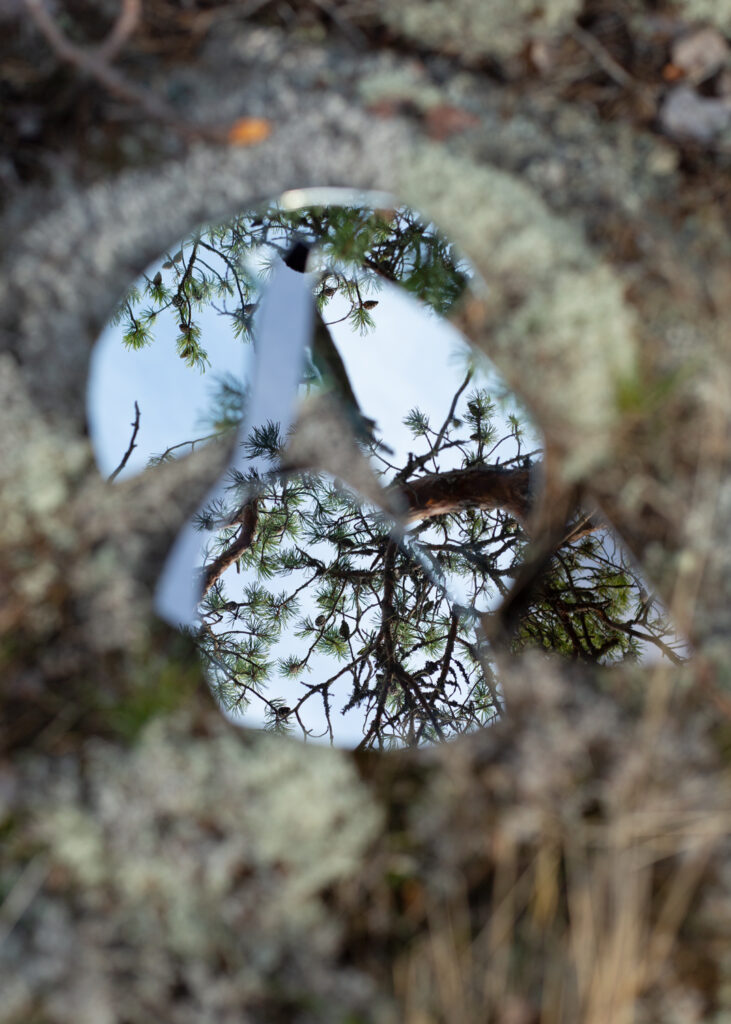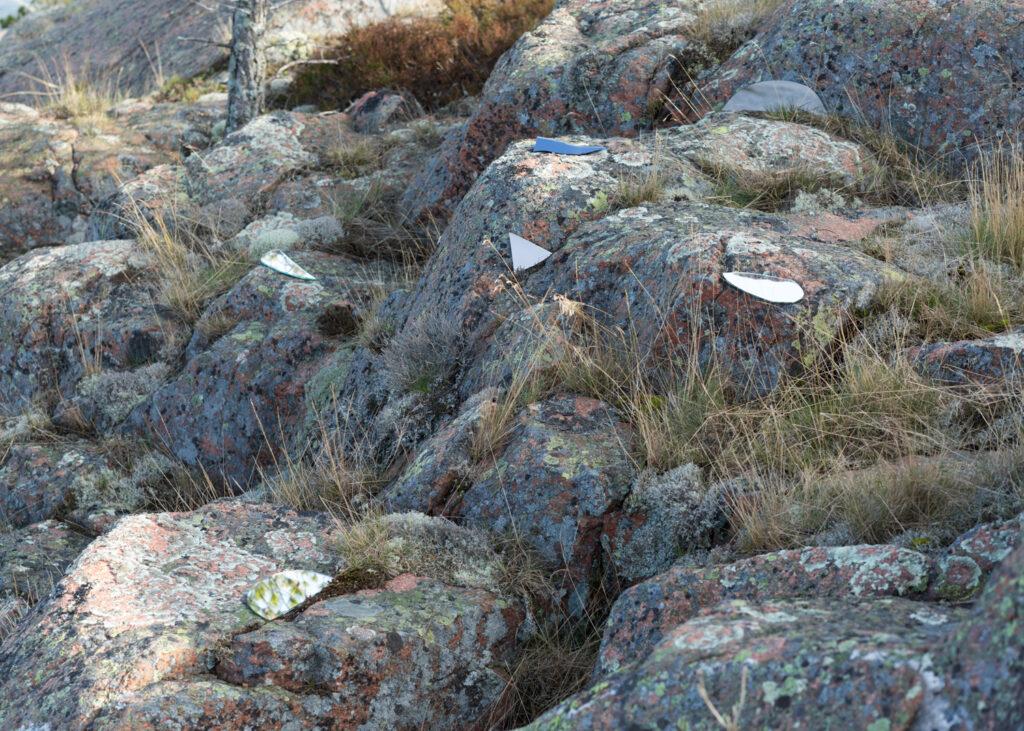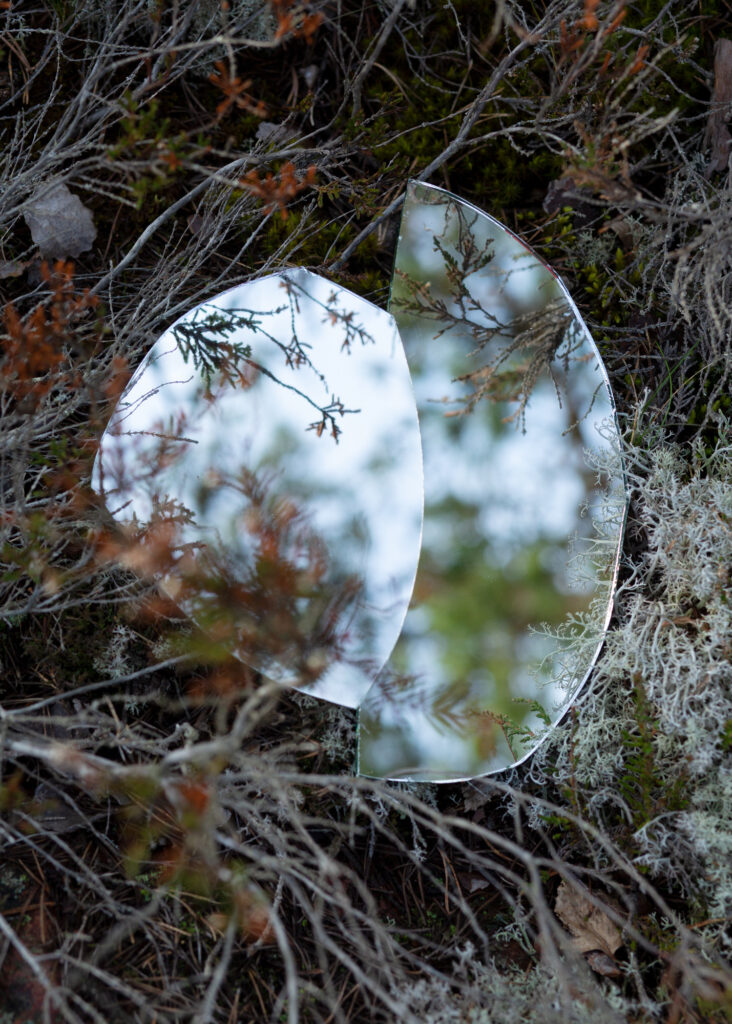Bryobionta – Lichenum
Artist
Maija Annikki Savolainen
Format
Still photography
Year
2021
Throughout the times, the tool for identifying plant species has always been the a very precise and specific manner to draw living plant individuals and the description of the habitat of the species. A herbarium compiled this way could be described as photo-accurate. Today, plant textbooks use photographs, but they still have not completely replaced drawings. This is because a drawing is a more flexible medium than a photograph. The camera’s monocular perspective flattens its multidimensional object onto a two-dimensional surface and shows only one side of it. By drawing, you can include characteristics of many different individuals in the picture, show different sides of the plant in the same picture, or outline structures that are invisible to the eye inside, on top of, and next to the visible structures.
In the photographs, the mirrors among the moss and lichen growth cut irregular and repetitive shapes on the image surface. They multiply plants, show different aspects of them, and reflect their environment and the light in it. In the pictures, showing individual species and distinguishing them from other species is not the main focus. The photographs suggest an unique way of remembering and recording vegetation whose existence is not guaranteed in the future.
Maija Annikki Savolainen
Website
maijasavolainen.fi
Maija Annikki Savolainen is a visual artist working with photography, text, stones, and green plants. She gained her Master of Arts in Photography from Aalto University in 2014. With a background studying biology, her work tends to combine natural sciences and art in a distinctive way. Photographic gestures and light-induced communication technologies are at the core of her practices. Her works have been on exhibition widely in Finland and abroad, most recently in Photo Espana and IMAGO Lisboa -festival in Lisbon. She has published a monograph with the title When the Sense of Belonging is Bound to a System of Movement in 2014 by Kehrer Verlag. Alongside her own practice she has been working in various collaborations: One Picture Manifesto, Kinship photo, Trojan Horse Summer School, and Maanantai-collective. She also has worked as full time university teacher in Aalto University Photography MA program.
Bryophyta
In Finland mosses and lichens are the most endangered organisms alongside with birds. 34.5% of mosses and 26% of lichens are classified as endangered, while 11.9% of all examined species are endangered. Lichens and mosses do not have differentiated roots, but they take the water and nutrients they need directly through the outer surface and are therefore vulnerable to air and water pollutants. Consequently, the presence and condition of certain species have long been used as indicators of air quality. On the other hand, the species spectrum of these groups also include species that can withstand exceptionally extreme conditions. Some of the species belonging to mosses are the oldest plant groups still alive and lichens are considered being/as one of the species that can best tolerate changing conditions. For example, they can spend long periods almost completely dry, and continue to assimilate immediately after the first rain.
Load more +
Moss and lichens are united by the fact that (their) individual species are difficult to identify and distinguish from each other. The taxonomic definition of lichens is a symbiosis of microscopic algae and fungi, and their appearance varies greatly depending on environmental conditions and the lichen’s stage of development. Mosses, on the other hand, include very versatile plants, whose undifferentiated thallus can take leaf-like, stem-like or flat, plate-like forms.
In Finnish nature, mosses and lichens are actually found in all growth environments: on bare rock surfaces, among forest undergrowth, in waters and wetlands all the way to the top of the fells. Although their distribution is wide and some species thrive in a wide variety of habitats, the vast majority of species have very specific requirements regarding their habitat. This means that when a certain growth environment is destroyed or changed, the moss and lichen species disappear with it.
REFERENCES
https://www.syke.fi/fi-FI/Tutkimus__kehittaminen/Luonto/Eliotyoryhmat/Sammaltyoryhma/Sammalten_uhanalaisuushttps://en.wikipedia.org/wiki/Lichen
